AWS News Blog
New: Server-Side Encryption for Amazon Kinesis Streams
In this age of smart homes, big data, IoT devices, mobile phones, social networks, chatbots, and game consoles, streaming data scenarios are everywhere. Amazon Kinesis Streams enables you to build custom applications that can capture, process, analyze, and store terabytes of data per hour from thousands of streaming data sources. Since Amazon Kinesis Streams allows applications to process data concurrently from the same Kinesis stream, you can build parallel processing systems. For example, you can emit processed data to Amazon S3, perform complex analytics with Amazon Redshift, and even build robust, serverless streaming solutions using AWS Lambda.
Kinesis Streams enables several streaming use cases for consumers, and now we are making the service more effective for securing your data in motion by adding server-side encryption (SSE) support for Kinesis Streams. With this new Kinesis Streams feature, you can now enhance the security of your data and/or meet any regulatory and compliance requirements for any of your organization’s data streaming needs.
In fact, Kinesis Streams is now one of the AWS Services in Scope for the Payment Card Industry Data Security Standard (PCI DSS) compliance program. PCI DSS is a proprietary information security standard administered by the PCI Security Standards Council founded by key financial institutions. PCI DSS compliance applies to all entities that store, process, or transmit cardholder data and/or sensitive authentication data which includes service providers. You can request the PCI DSS Attestation of Compliance and Responsibility Summary using AWS Artifact. But the good news about compliance with Kinesis Streams doesn’t stop there. Kinesis Streams is now also FedRAMP compliant in AWS GovCloud. FedRAMP stands for Federal Risk and Authorization Management Program and is a U.S. government-wide program that delivers a standard approach to the security assessment, authorization, and continuous monitoring for cloud products and services. You can learn more about FedRAMP compliance with AWS Services here.
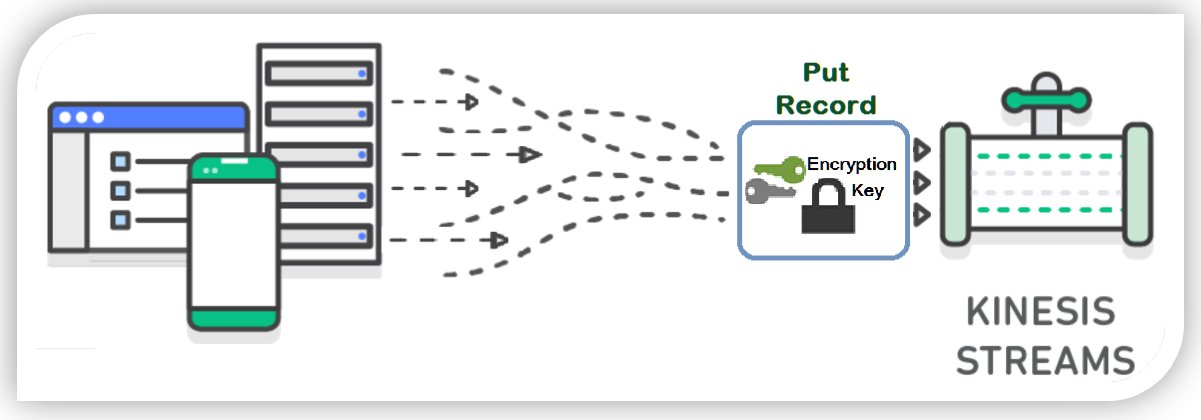
Now are you ready to get into the keys? Get it, instead of get into the weeds. Okay a little corny, but it was the best I could do. Coming back to discussing SSE for Kinesis Streams, let me explain the flow of server-side encryption with Kinesis. Each data record and partition key put into a Kinesis Stream using the PutRecord or PutRecords API is encrypted using an AWS Key Management Service (KMS) master key. With the AWS Key Management Service (KMS) master key, Kinesis Streams uses the 256-bit Advanced Encryption Standard (AES-256 GCM algorithm) to add encryption to the incoming data.
In order to enable server-side encryption with Kinesis Streams for new or existing streams, you can use the Kinesis management console or leverage one of the available AWS SDKs. Additionally, you can audit the history of your stream encryption, validate the encryption status of a certain stream in the Kinesis Streams console, or check that the PutRecord or GetRecord transactions are encrypted using the AWS CloudTrail service.
Walkthrough: Kinesis Streams Server-Side Encryption
Let’s do a quick walkthrough of server-side encryption with Kinesis Streams. First, I’ll go to the Amazon Kinesis console and select the Streams console option.
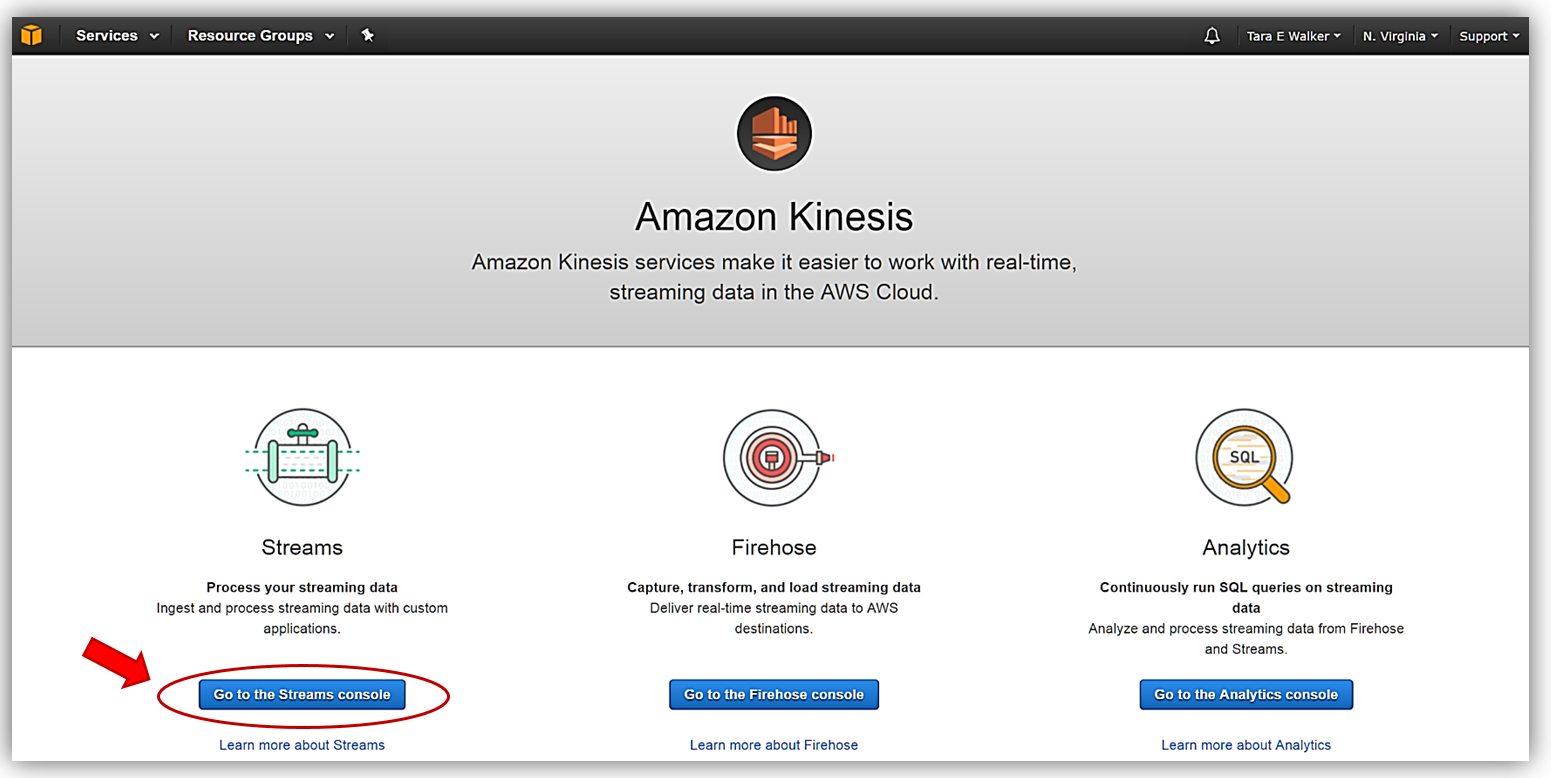
Once in the Kinesis Streams console, I can add server-side encryption to one of my existing Kinesis streams or opt to create a new Kinesis stream. For this walkthrough, I’ll opt to quickly create a new Kinesis stream, therefore, I’ll select the Create Kinesis stream button.

I’ll name my stream, KinesisSSE-stream, and allocate one shard for my stream. Remember that the data capacity of your stream is calculated based upon the number of shards specified for the stream. You can use the Estimate the number of shards you’ll need dropdown within the console or read more calculations to estimate the number of shards in a stream here. To complete the creation of my stream, now I click the Create Kinesis stream button.
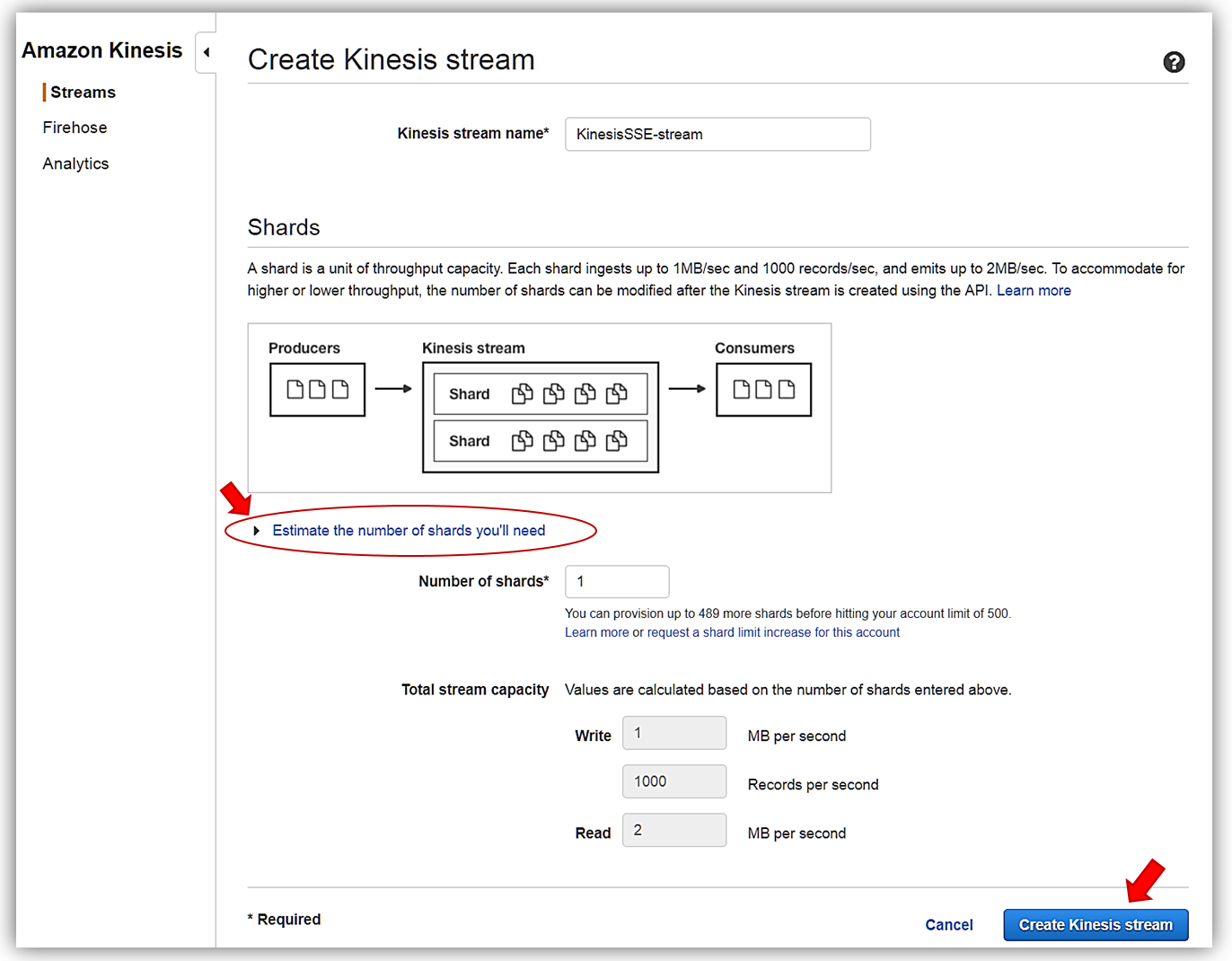
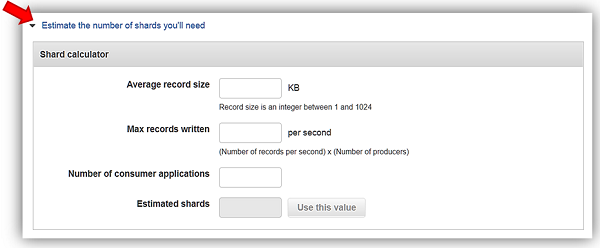
With my KinesisSSE-stream created, I will select it in the dashboard and choose the Actions dropdown and select the Details option.
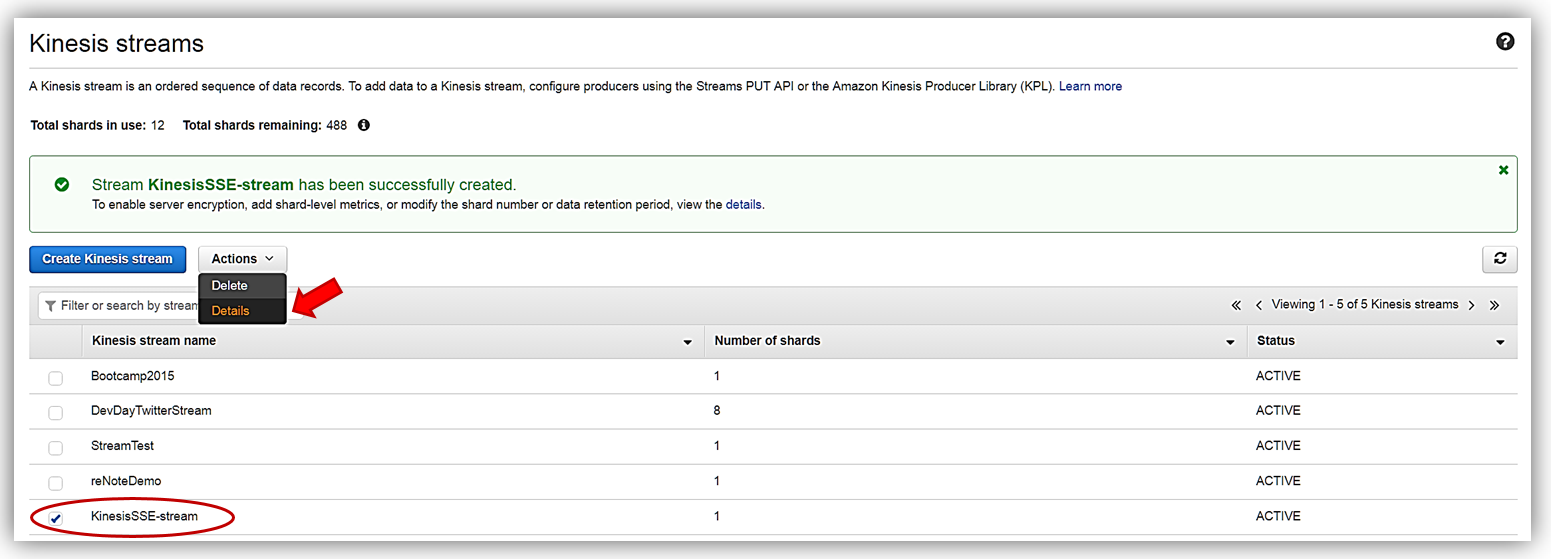
On the Details page of the KinesisSSE-stream, there is now a Server-side encryption section. In this section, I will select the Edit button.

Now I can enable server-side encryption for my stream with an AWS KMS master key, by selecting the Enabled radio button. Once selected I can choose which AWS KMS master key to use for the encryption of data in KinesisSSE-stream. I can either select the KMS master key generated by the Kinesis service, (Default) aws/kinesis, or select one of my own KMS master keys that I have previously generated. I’ll select the default master key and all that is left is for me to click the Save button.
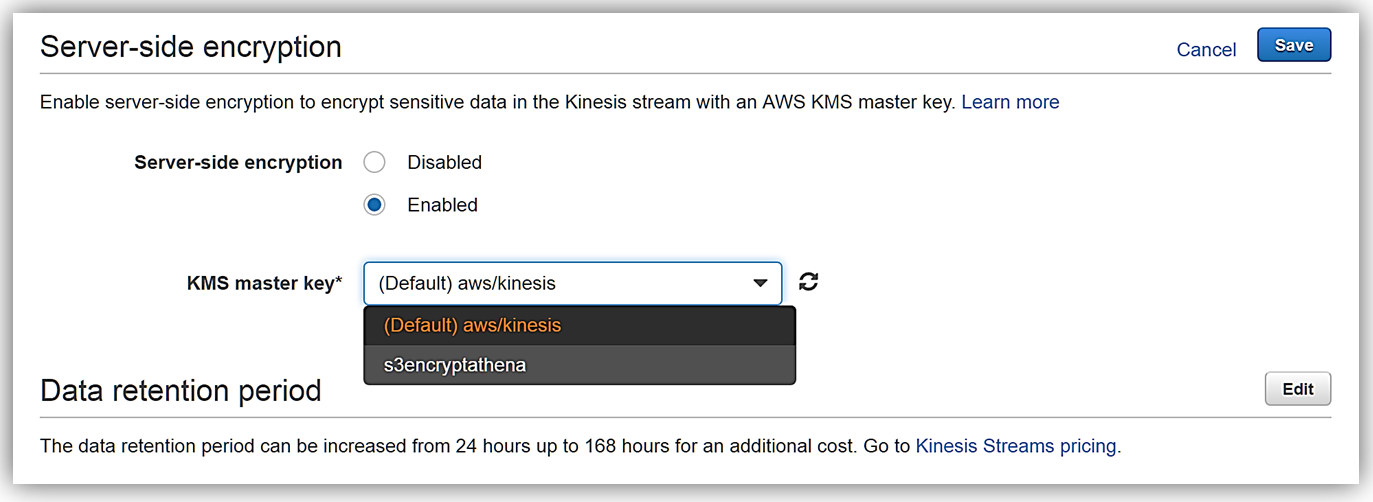
That’s it! As you can see from my screenshots below, after only about 20 seconds, server-side encryption was added to my Kinesis stream and now any incoming data into my stream will be encrypted. One thing to note is server-side encryption only encrypts incoming data after encryption has been enabled. Preexisting data that is in a Kinesis stream prior to server-side encryption being enabled will remain unencrypted.

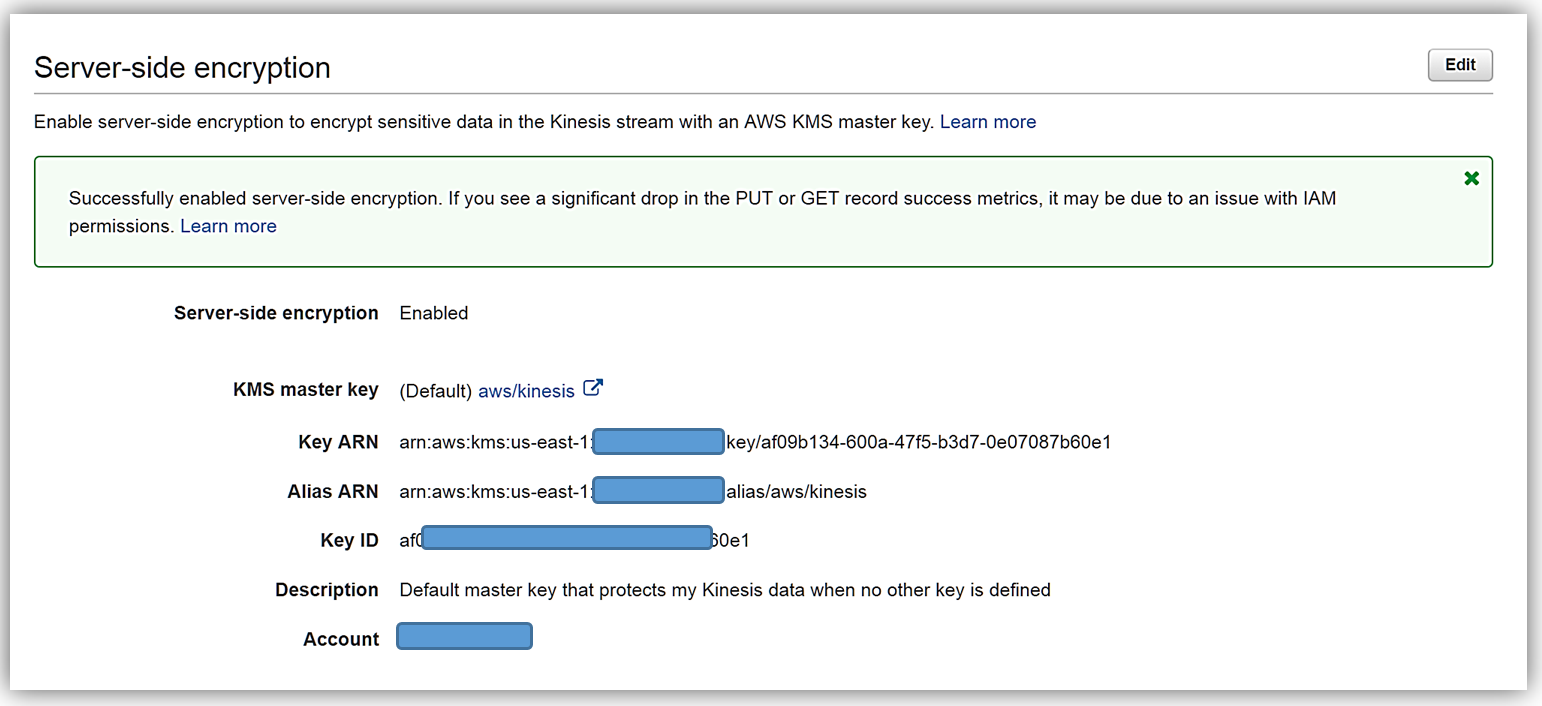
Summary
Kinesis Streams with Server-side encryption using AWS KMS keys makes it easy for you to automatically encrypt the streaming data coming into your stream. You can start, stop, or update server-side encryption for any Kinesis stream using the AWS management console or the AWS SDK. To learn more about Kinesis Server-Side encryption, AWS Key Management Service, or about Kinesis Streams review the Amazon Kinesis getting started guide, the AWS Key Management Service developer guide, or the Amazon Kinesis product page.
Enjoy streaming.
– Tara